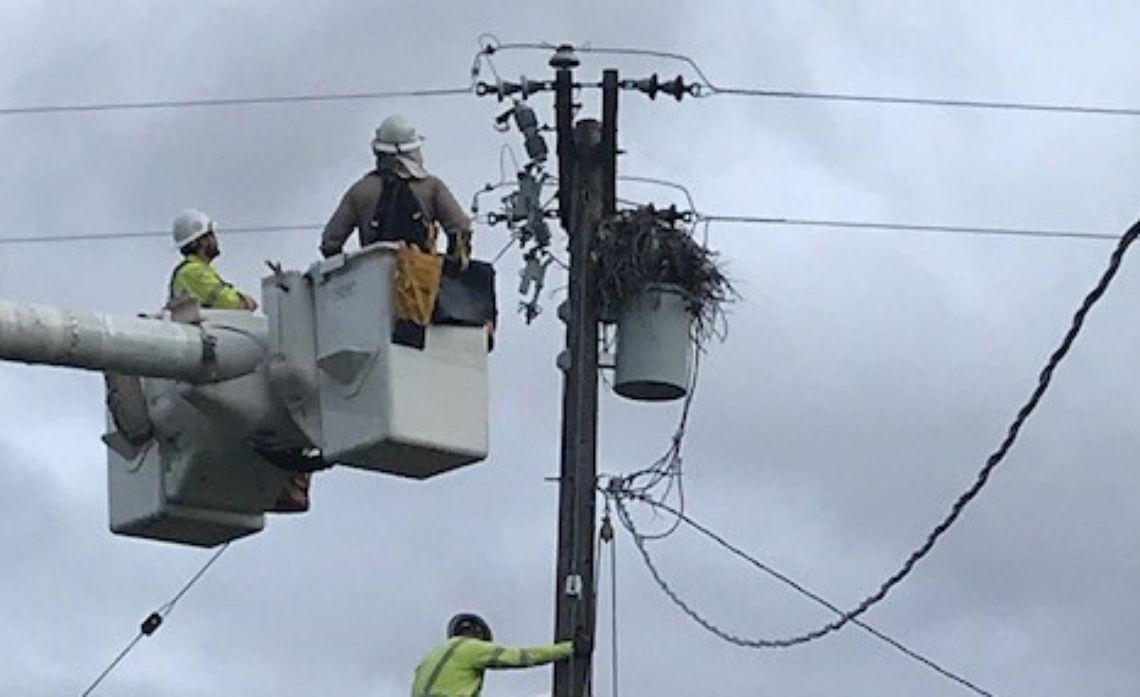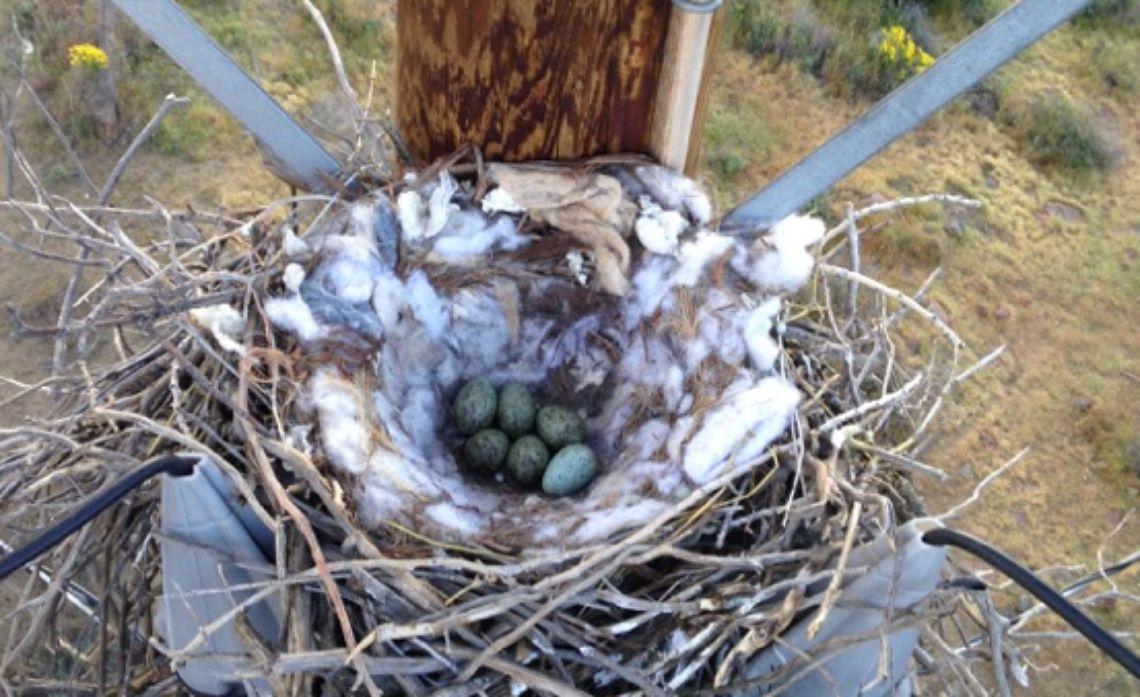Helping Keep Nesting Birds Safe
When birds or other animals nest on electric grid infrastructure, SCE has specially trained crews that work to protect wildlife and avoid power outages.
By Ben Gallagher ENERGIZED by Edison Writer
Spring brings new life to Southern California Edison’s service area, often too close to the company’s infrastructure. That makes nesting season, March 1-Oct. 31, a busy time for Kara Donohue, who oversees SCE’s Avian Protection Program.
“Ultimately, we all have the same goal in mind, which is to protect wildlife and ensure that we mitigate any potential disturbance to their nesting period,” Donohue said.
Large nests on electric transmission and distribution equipment can cause power outages and be a threat to the birds. Donohue works with specially trained crews to safely relocate these nests onto a platform attached to the utility pole or another nearby location.
Once the nest’s transition is complete, an on-site biologist observes the nest from a distance to ensure the adult birds return and continue to tend the nest. If it’s simply impossible to relocate a nest or the adults abandon it, SCE’s team then takes the eggs or chicks to a wildlife rehabilitator to raise and release the birds back into the wild.
“We have built great relationships with wildlife rehabilitators throughout our service area,” said Donohue, noting that SCE’s environmental team also meets regularly with wildlife agencies to share environmental practices and partner on stewardship opportunities.
The Ojai Raptor Center is one of SCE’s wildlife protection partners. The nonprofit focuses on wildlife rehabilitation and educates local children on the importance of habitat conservation. The group also takes in abandoned eggs or chicks and is a longtime SCE sustainability partner.
Through grant funding from SCE’s parent company, Edison International, the Ojai Raptor Center has held programs for underfunded schools to teach children about conservation and locally native species. The group also used SCE grant funds to build the largest flight pen in California for large birds of prey, which is used to rehabilitate eagles, red-tailed hawks, vultures and other large avian species.
“SCE has done a lot to help us not only in our work to rehabilitate birds but to educate local children about the importance of conservation,” said Kim Stroud, executive director and founder of the Ojai Raptor Center. “It’s obviously vital to our mission to help our local bird populations, but it’s equally important that we preserve their habitats for future generations.”
SCE has maintained an active Avian Protection Program since 1988. The program ensures that crews and contractors are trained annually to check for nesting birds and wildlife year-round before beginning work. It also guides when and where work is conducted, including establishing a buffer zone in some instances to minimize disruption to nearby nesting species.
Program guidelines also take into consideration the type of work that is planned near an active nest. In cases where the work is not critical, crews sometimes wait until hatchling birds mature and leave the nest before beginning the project.
Learn more about the work SCE is doing to protect avian and other wildlife habitats.






